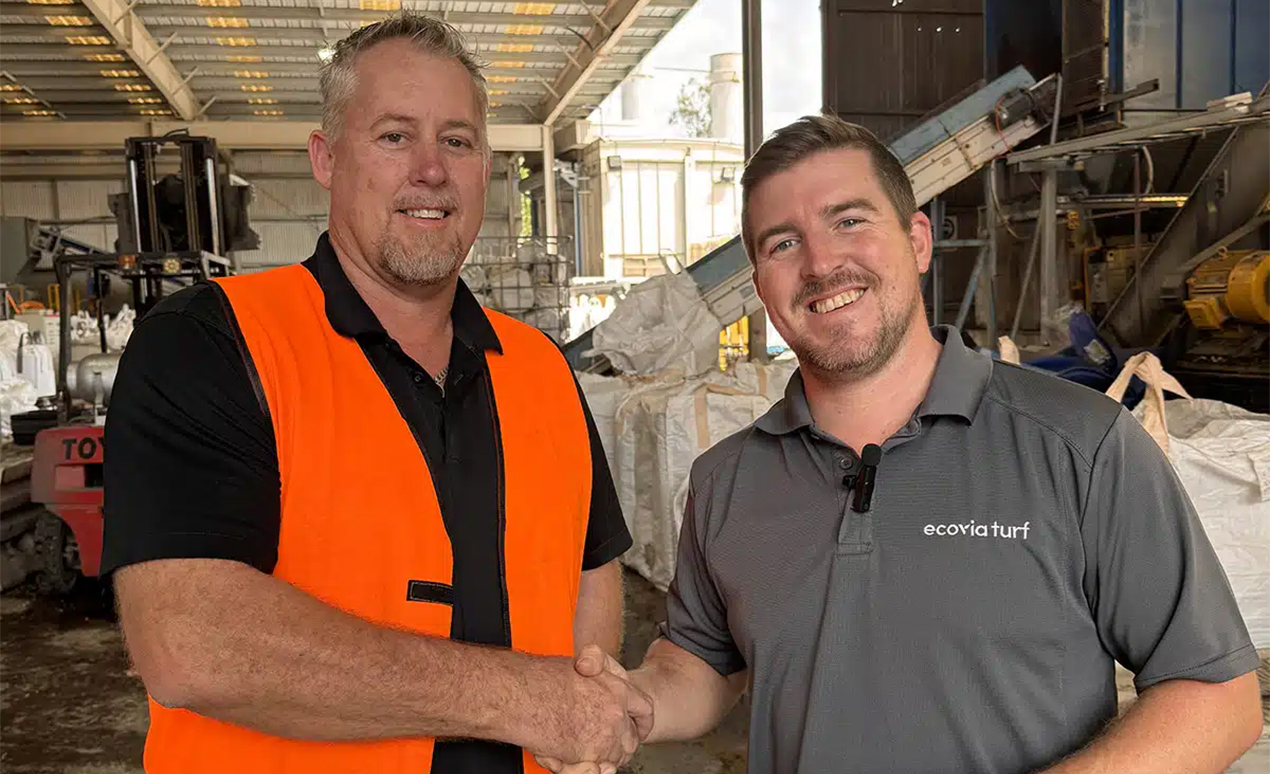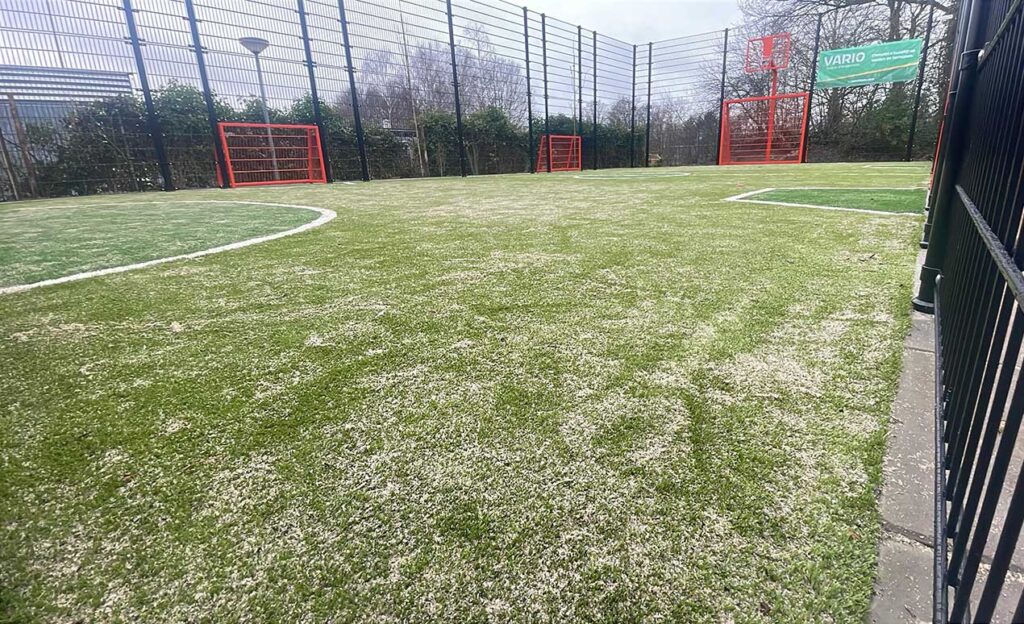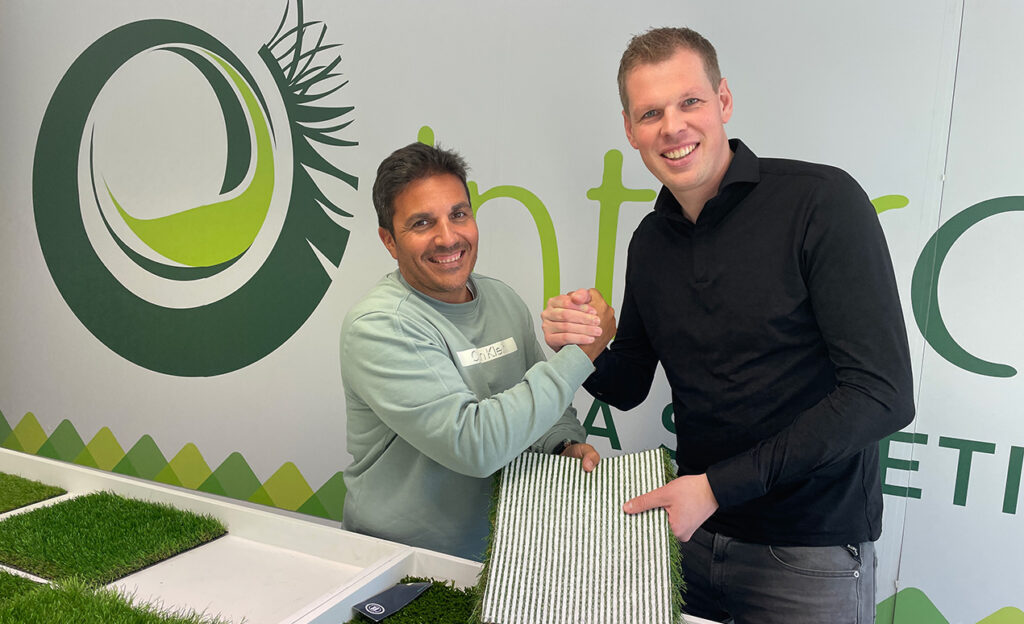In Australia, the commitment to sustainability is being put into practice through the local recycling of ONE-DNA™ artificial grass. Together with dedicated changemakers like Ecovia Turf and Recycling Solutions Australia, artificial grass is kept out of landfills and given a new lifecycle—exactly where it’s needed, without the additional CO₂ footprint of transportation. This isn’t just about recycling; it’s an innovative approach to sustainable resource management for artificial grass and a step towards true circularity in the industry.
Why Local Recycling Matters
Local recycling is not just a good idea; it’s a necessary step forward for the artificial turf industry. Transporting artificial grass over long distances for recycling increases CO₂ emissions and costs, which diminishes the environmental benefits of recycling. The ONE-DNA™ design was developed as a monomaterial artificial grass product, making it ideal for local recycling at plastic recycling facilities. Thanks to its single-polymer composition, it is perfectly suited for reprocessing at facilities like Recycling Solutions Australia in Brisbane. By keeping valuable raw materials local, sustainability is maximized.
Innovative Partnerships
Sustainability requires collaboration and innovation. Ecovia Turf, an Australian changemaker, has joined forces with Recycling Solutions Australia to tackle the challenge of efficiently recycling ONE-DNA™ artificial grass. Recently, Simon Crook and his team at Recycling Solutions Australia conducted a successful trial, converting artificial grass remnants into high-quality polyethylene. Simon stated, “The single-polymer design of ONE-DNA™ makes the recycling process efficient and yields excellent results for reuse in applications like injection molding and extrusion. This is a real example of the circular economy in action.”
Commitment to Circularity and Transparency
Ecovia Turf is fully committed to transparency in sustainability. Unlike competitors who sometimes engage in greenwashing with vague claims, Ecovia takes a no-compromise approach, tracking every piece of artificial grass waste—from small off-cuts to entire end-of-life turfs. These materials are recycled rather than downcycled, keeping valuable resources in the loop and out of landfills. The recycled material is cleaned, shredded, and transformed into new plastic products, thus completing the lifecycle sustainably.
Looking Ahead with ONE-DNA™ Artificial Grass
With a focus on single-material artificial grass, local and efficient recycling becomes achievable. By reducing CO₂ emissions, preserving valuable raw materials, and avoiding greenwashing, the aim is true sustainability.

































